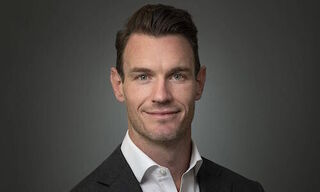Daniel Durrer: «Outflows Aren’t The Problem»
Global asset manager GAM is in the midst of an up to three-year fight to get its products back into portfolios of institutional investors, the company's European distribution chief Daniel Durrer tells finews.asia.
Daniel Durrer, GAM’s offering is dramatically reduced. What is the common theme now?
We’re a highly active and high-alpha generating manager for specialized fixed income, equities and absolute return strategies. Funds like emerging debt or mortgage-backed securities are attractive in a low or negative interest rate environment. They represent appealing returns at reasonable prices where other asset classes like high-yield are «priced to perfection».
And yet GAM has a major problem growing: you’re still posting outflows one year after liquidating the absolute-return funds (ARBF) at the center of a year-long controversy.
Outflows aren’t the problem. Every asset manager has them, depending on market vagaries like asset allocation preferences. Ours are on the order of our industry peers. We’re lacking the growth to replace the redemptions though.
The fund was liquidated and an internal investigation ended 16 months ago.
For clients who pulled the ripcord and withdrew money, it can be a two- to three-year process of fighting to get back in. They need to see we can add value or provide something others can’t. We’re in the midst of rebuilding. Client feedback is favorable, but I can’t push a button to convert client interest into inflows.
How much is the ARBF legacy still part of your client discussions?
It’s not. It may have been a mistake to send clients a first letter of little substance and dramatic wording. When we detailed the wrong-doing two weeks later, many clients felt we had been too hasty in suspending the manager [Tim Haywood] and liquidating. But our clients were at the center of the decision and they appreciated we returned 100 percent of their money in the fairest way possible. We’ve worked a lot on our culture since then. It was a strong statement within GAM that a star manager is treated the same way as any other employee.
The fact is that GAM is in crisis with a relatively high spending base against the backdrop of a pandemic.
Yes, but it also illustrates the long-term nature of our business. Thankfully we have long-term client relationships. I underestimated the spillover from ARBF into other strategies, but I’m convinced we’re on track to report net inflows again soon.
GAM’s share price illustrates that investors don’t necessarily share your optimism.
I think as soon as the market sees a growth trajectory, it will be extremely favorable for our share price. It’s unusual for our clients to look at the share price when they decide whether to invest in our products. But it’s clear that after an event like ARBF and with new management, our clients would like to see the progress we’ve made reflected in our share price.
What products specifically are clients showing appetite for?
Clients are hungry for yields in products like catastrophe bonds, emerging market debt, subordinated debt, or mortgage-backed securities. We recently won a ticket worth roughly 150 million Swiss francs from a major Swiss player, which was all the more noteworthy for us because they have an insurance-linked securities manager in-house. Client interest is currently very broad and includes equities as well as absolute return strategies which added value during the Covid-19 downturn.
What are GAM’s arguments against an increasing shift to passive instruments?
It’s not a war of active vs. passive. I’m not against structured products or passive instruments – the more choice clients have, the better. But there is a sub-group of managers which charges active-type fees without the added value of an active one – they will get squeezed. In addition, there is a number of asset classes that don’t lend itself for passive management.
Truly active management which adds value for clients will continue to attract assets. We've seen a large number of strategies significantly outperforming their benchmarks this year, particularly in the current volatile and uncertain market conditions.
GAM still works together with Greensill, which was at the root of the ARBF problems, on a supply chain fund.
We now have a Swiss franc-denominated version of the fund, with positive returns just above zero. A few basis points is a lot more attractive than the current negative interest rates (-0.75 percent) – being charged on large franc cash account holdings of Swiss clients.
A Luxembourg-based GAM Greensill fund showed a major withdrawal right before quarter-end, and then an investment in nearly the same amount one week later. A sign that clients still don’t want to report owning Greensill-managed instruments?
No. Some investors need to realize gains shortly before a reporting period ends, or may have regulatory, tax, or other reasons for withdrawing. The fact the money returned to us indicates to me the client was satisfied with the product.
Besides growth and efficiency, transparency is another pillar of GAM’s new strategy. Can you be more specific?
This pertains specifically to ESG, where we are about to appoint an expert who reports to our CEO – this underscores the importance of the topic for us. We believe as an active manager, through engagement with companies, that we can play a key role in effecting change. We’re also planning to launch a product in the green bond segment early next year.
Daniel Durrer is head of distribution for Europe, not excluding the U.K., and Latin America at GAM. The Swiss banker has been with GAM, founded by hedge fund-of-fund pioneer Gilbert de Botton in 1983, since 2002. Previously, he was responsible for business development of UBS' investment fund unit in the Cayman Islands. Durrer is based in Zurich.




























